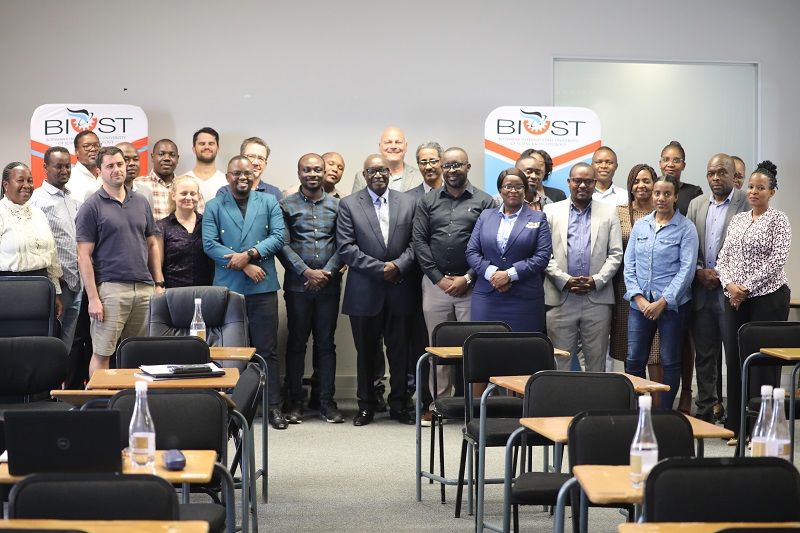A new project, Co-HYDIM-SA, aims to improve water security in Southern Africa.

as part of the CUVEWIS co-design workshop.
The region currently experiences a severe drought (Photo: A. Fink).
Co-HYDIM-SA (Co-Design of Hydrometeorological Information System for Sustainable Water Resources Management in Southern Africa) is one of the seven Water Security in Africa (WASA) projects funded by the German “Bundesministerium für Bildung und Forschung” (BMBF). The project aims to optimize water resources management by providing improved, easy-to-use tools of monitoring and forecasting hydrometeorological parameters like rainfall, river discharge, or soil moisture in southern Africa, thereby enhancing water security in the region. Working in two trans-boundary river catchments, the Cuvelai (Namibia/Angola) and Notwane (Botswana/South Africa), the project will co-design and co-develop with stakeholders early warning systems over a four year period, 2024-2028. Combining novel approaches of sub-seasonal to seasonal (S2S) forecasting, hydrological modeling, and machine learning, the Cuvelai Early warning system (CUVEWIS) and the Gabarone dam Early Warning Information System (EWIS) in the Notwane catchment will be developed for the Cuvalai and Notwane watersheds, respectively.
A team of scientist from Germany (KIT, University of Bonn, Goethe University Frankfurt, International Centre for Water Resources and Global Change, and “Deutscher Wetterdienst”) and Africa (University of Namibia, Botswana University of Science and Technology, Stellenbosch University) together with industry partners and stakeholders, are co-designing and co-developing the forecast products and EWISs. Working with stakeholders will enable the creation of products and systems tailor-made for the region and also ensure long-term sustainability, especially after the project ends. To formally start the project, series of kickoff, data mining, and co-design workshops were held from 30th September to 7th October 2024 in Namibia and Botswana. These workshops followed from the WASA project kickoff that brought together over 110 scientists, government officials and industry partners across all the WASA projects from 25th to 27th September 2024 in Stellenbosch, South Africa.

(Photo: Co-HYDIM-SA/BIUST)
Specifically at KIT, we aim to use our vast expertise on S2S forecasting to improve the quality of weather forecasts for the region at lead times from a few weeks out to half a year. We shall employ the latest postprocessing and machine learning techniques to bias correct and create these forecasts. This will also be supported by Alitiq GmbH, a German-based private company that specializes in weather and S2S forecasting for the energy sector. These forecasts which will be released routinely via CUVEWIS and EWIS, and will also be used as input to drive the hydrological models being developed and/or improved for the study domains.
Working Group: Tropical Meteorology
